Table Of Contents
Considering installing solar panels on your roof but not sure where to start?
This article will discuss what solar panels are, the benefits of installing them, and the factors to consider before making the decision.
We will also provide you with a step-by-step guide on preparing your roof for solar panel installation and the necessary steps to install them successfully.
Dive into the world of solar energy and harness the power of the sun!
What Are Solar Panels?
Solar panels are devices that convert sunlight into electricity using solar power technology, helping generate clean and renewable energy for homes and businesses, thus reducing dependency on traditional energy sources.
These panels typically consist of interconnected solar cells that capture the sun's rays and convert them into usable electricity through the photovoltaic effect. The captured energy can then be stored in batteries or fed back into the grid for wider use. Solar panels play a crucial role in the shift towards sustainable energy sources, as they are eco-friendly and can significantly reduce carbon emissions. The advancements in technology have made them more efficient and cost-effective over the years, making solar power a viable option for many households and organizations.
Explore: How To Clean Solar Panels On Roof
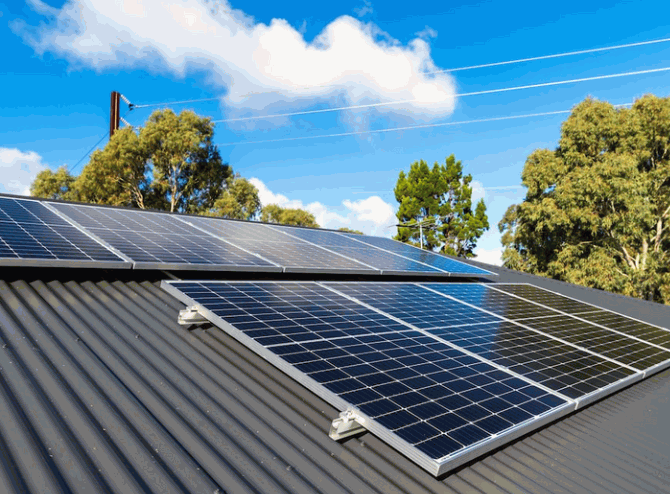
Why Should You Consider Installing Solar Panels On Your Roof?
Installing solar panels on your roof can significantly reduce your energy bills, provide long-term financial savings, and contribute positively to the environment by decreasing your carbon footprint and reliance on fossil fuels.
What Are The Benefits Of Solar Panels?
The benefits of installing solar panels include substantial reductions in energy bills, increased home value, and the generation of clean energy that supports a sustainable lifestyle.
Solar panels offer a pathway to long-term financial savings as they harness the power of the sun to generate electricity for your home, significantly cutting down on monthly energy costs. This not only translates to lower utility bills but also shields you from the volatility of traditional energy prices. Enhancing your property with solar panels can boost its resale value, making it more attractive to potential buyers and standing out in the real estate market.
On the environmental front, solar power reduces your carbon footprint by decreasing reliance on fossil fuels, thus contributing to a healthier planet. By embracing renewable energy sources like solar, homeowners actively participate in the fight against climate change and promote a more sustainable future for generations to come.
What Factors Should You Consider Before Installing Solar Panels?
Before installing solar panels, it is crucial to consider various factors such as the location and amount of sunlight your roof receives, the orientation and angle of your roof, the material and condition of your roof, and your overall energy usage and needs.
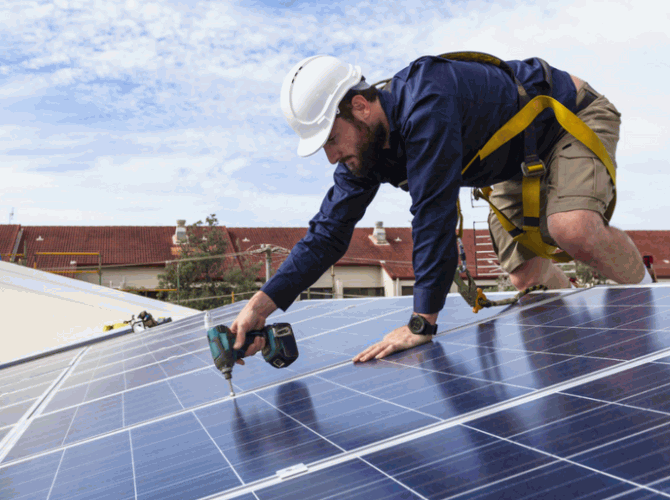
Location And Sun Exposure
The location of your home and the amount of sunlight it receives are critical factors in determining the efficiency of your solar power system.
When choosing the ideal location for your solar panels, it is essential to consider regional factors such as weather patterns, shading from nearby structures or trees, and local regulations. For instance, homes in sun-drenched regions like Arizona or Southern California may have more optimal conditions for solar energy production compared to areas with frequent cloud cover.
Assessing the orientation of your roof and ensuring it has sufficient exposure to the sun during peak hours can significantly impact the overall energy output of your system. A south-facing rooftop generally receives the most sunlight throughout the day, making it an ideal location for solar panel installation.
Roof Orientation And Angle
The orientation and angle of your roof play a vital role in the effectiveness of solar panels, as they need to be positioned to capture the maximum amount of sunlight.
The optimal positioning of solar panels on a roof is typically facing towards the south in the northern hemisphere and north in the southern hemisphere. This allows them to receive the most sunlight throughout the day.
The angle of the roof should be adjusted depending on the latitude of your location. For instance, roofs in lower latitudes may benefit from a shallower angle, while those in higher latitudes might require a steeper angle to optimize solar panel efficiency.
Roof Material And Condition
The type of material and the overall condition of your roof are crucial factors to evaluate before proceeding with the installation of solar panels.
When considering different roof materials, it is important to take into account their compatibility with solar panel installation. For example, metal roofs are often praised for their durability and longevity, making them a suitable choice for supporting solar panels. Their smooth surface allows for easy installation and maintenance of solar arrays. On the other hand, tile roofs, while aesthetically pleasing, may require additional reinforcements to support the weight of solar panels. Ensuring that your roof is in good condition and structurally sound is imperative to prevent any issues during or after the installation process.
Energy Usage And Needs
Understanding your home's energy usage and needs is essential to ensure that the solar power system you install is adequately sized and configured to meet your requirements.
One way to assess your energy consumption patterns is by analyzing your monthly utility bills. Take note of your average kilowatt-hour usage to get a sense of how much electricity your household consumes. Consider the energy-intensive appliances and electronics you use regularly, such as air conditioners, heaters, refrigerators, and washing machines.
By evaluating when and how you use the most energy, you can tailor the size and design of your solar power system to offset peak energy demand periods. This customization ensures that your system is optimized to generate electricity efficiently and effectively, ultimately leading to long-term cost savings and a reduced carbon footprint.
How To Prepare Your Roof For Solar Panel Installation?
Before installing solar panels, it is essential to prepare your roof through thorough inspection, cleaning, and necessary repairs, as well as obtaining all required permits and approvals from local authorities.
Inspect Your Roof
Conducting a thorough inspection of your roof to assess its condition is the first critical step in preparing for solar panel installation.
Regular roof inspections play a vital role in ensuring the longevity and efficiency of your roof. By evaluating for any signs of damage, deterioration, or potential weaknesses, you can address issues proactively and prevent costly repairs down the line. A well-maintained roof not only safeguards your property but also enhances its overall value.
While it's possible to conduct visual checks yourself, hiring a professional for a comprehensive inspection is highly recommended. Professionals have the expertise and tools to spot hidden problems that might go unnoticed by the untrained eye. Investing in a professional inspection can save you time, money, and headaches in the long run.
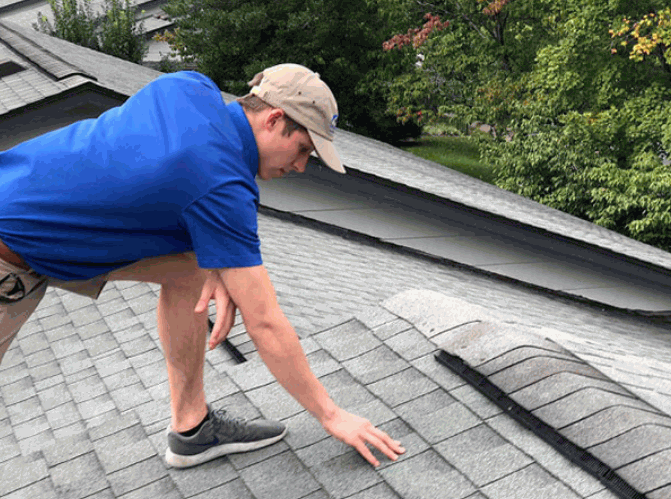
Clean And Repair Your Roof
Cleaning and repairing your roof ensures that it is in optimal condition to support the solar panels, preventing potential issues down the line.
Before initiating the cleaning process, carefully inspect the roof for any signs of damage, such as cracked shingles or leaks. If any issues are detected, it's crucial to address them promptly to avoid further deterioration.
- Start by clearing any debris like leaves and twigs from the surface using a broom or leaf blower.
- Next, use a gentle cleaning solution and a soft-bristled brush to scrub away dirt and algae buildup.
- Consider applying a protective roof sealant to enhance durability and weather resistance.
These steps, coupled with regular maintenance, will prolong the lifespan of your roof and safeguard your solar investment.
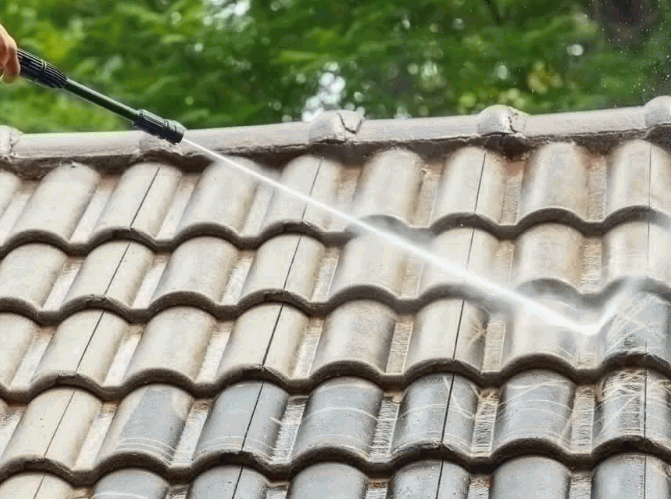
Reinforce Your Roof Structure
Reinforcing your roof structure is necessary to ensure it can support the weight of the solar panels and withstand various weather conditions.
One commonly used method to reinforce roof structures is through the installation of stanchions and rails. Stanchions are vertical support posts that help distribute the weight of the solar panels evenly across the roof. These are typically made of durable materials such as steel or aluminum.
Rails, on the other hand, are horizontal beams that connect the stanchions and provide a stable framework for mounting the solar panels. These rails are securely fastened to the stanchions to create a solid foundation for the panels.
Obtain Necessary Permits And Approvals
Securing the necessary permits and approvals from local authorities ensures that your solar panel installation complies with all local building laws and regulations.
Before beginning the process, it is crucial to understand the specific requirements set forth by your local government. This typically involves submitting detailed documentation such as architectural plans, engineering specifications, and evidence of compliance with zoning laws. Upon submission, the authorities will review your application to ensure it aligns with the established regulations. In some cases, you may be required to schedule inspections to confirm that the installation meets safety standards and environmental guidelines. Once all criteria are met and approvals are granted, you can move forward confidently with your solar panel project.
What Are The Steps To Install Solar Panels On Your Roof?
The installation process for solar panels on your roof involves several critical steps, including mounting the panels, connecting the wiring, installing the inverter, integrating with the electrical system, and conducting a final inspection and testing.
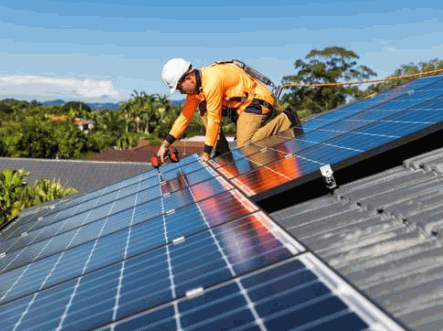
Mounting The Solar Panels
Mounting the solar panels on a roof involves securely attaching them using rails and stanchions to ensure stability and optimal positioning for sunlight exposure.
When installing the rails, it's crucial to consider the roof's material for appropriate anchoring. Roof types vary, which can impact the mounting process.
- For metal roofs, specialized attachments may be necessary to prevent damage and ensure a secure fit.
- On the other hand, flat roofs require specific stanchions and ballasted systems to maintain stability.
- For sloped roofs, adjustable tilt mounts help optimize sun exposure throughout the day.
Proper alignment and spacing of rails are essential for supporting the weight of the solar panels and ensuring structural integrity.
Connecting The Solar Panels
After mounting, the next step is to connect the solar panels with the necessary wiring to create a cohesive solar power system.
When connecting the solar panels, it is essential to use high-quality wiring to ensure optimal performance and longevity of the system. Typically, solar panels are connected in series or parallel configurations, depending on the specific requirements of the installation. Series connections involve linking the positive terminal of one panel to the negative terminal of the next, while parallel connections connect all positive terminals together and all negative terminals together.
Proper insulation and protection of the wiring connections are crucial to prevent electrical hazards and ensure the system's safety. It is recommended to use weatherproof and UV-resistant wiring to withstand outdoor conditions and minimize the risk of damage over time. Regularly inspecting the wiring connections for wear and tear can help identify potential issues early on and address them promptly.
Installing The Inverter
Installing the inverter is a crucial step in the solar panel installation process, as it converts the direct current (DC) generated by the panels into alternating current (AC) used by most home appliances.
There are generally two types of inverters used in solar power systems: string inverters and microinverters. String inverters are commonly used in larger installations and are more cost-effective, while microinverters are installed on each individual panel for better efficiency and monitoring capabilities.
During the installation process, the inverter is typically placed in a well-ventilated area near the main electrical panel. Proper wiring and grounding are crucial to ensure the safe and efficient operation of the solar power system.
The role of the inverter in a solar power system cannot be understated, as it is responsible for converting the DC electricity produced by the panels into AC electricity that can power your household appliances and feed excess energy back into the grid.
Connecting To The Electrical System
Connecting the solar power system to your home's electrical system involves integrating it with the fuse board or consumer unit, typically requiring the expertise of a qualified electrician.
To begin the process, ensure the solar power system is turned off and isolated from the grid to prevent any accidents.
- Next, locate a suitable point in the consumer unit where the system can be connected.
- Prioritize safety by wearing insulated gloves and using appropriate tools for the job.
- It's crucial to follow the manufacturer's guidelines when making the physical connection to avoid damaging the components.
- After the connection is established, double-check all the wirings to guarantee they are secure and correctly connected.
An inspection by a certified electrician is recommended to verify that the system is integrated safely and in compliance with local regulations.
Final Inspection And Testing
The final step involves a thorough inspection and testing of the entire solar power system to ensure it complies with regulations and performs efficiently.
This final inspection and testing stage is crucial in guaranteeing that all components of the system are functioning as intended. During this process, technicians meticulously examine the panels, inverters, wiring, and other key elements for any signs of damage or malfunction. Various performance tests are conducted to verify that the system is generating the expected amount of power and properly feeding it back into the grid. By rigorously evaluating every aspect, any potential issues can be identified and rectified before the system is fully operational.


